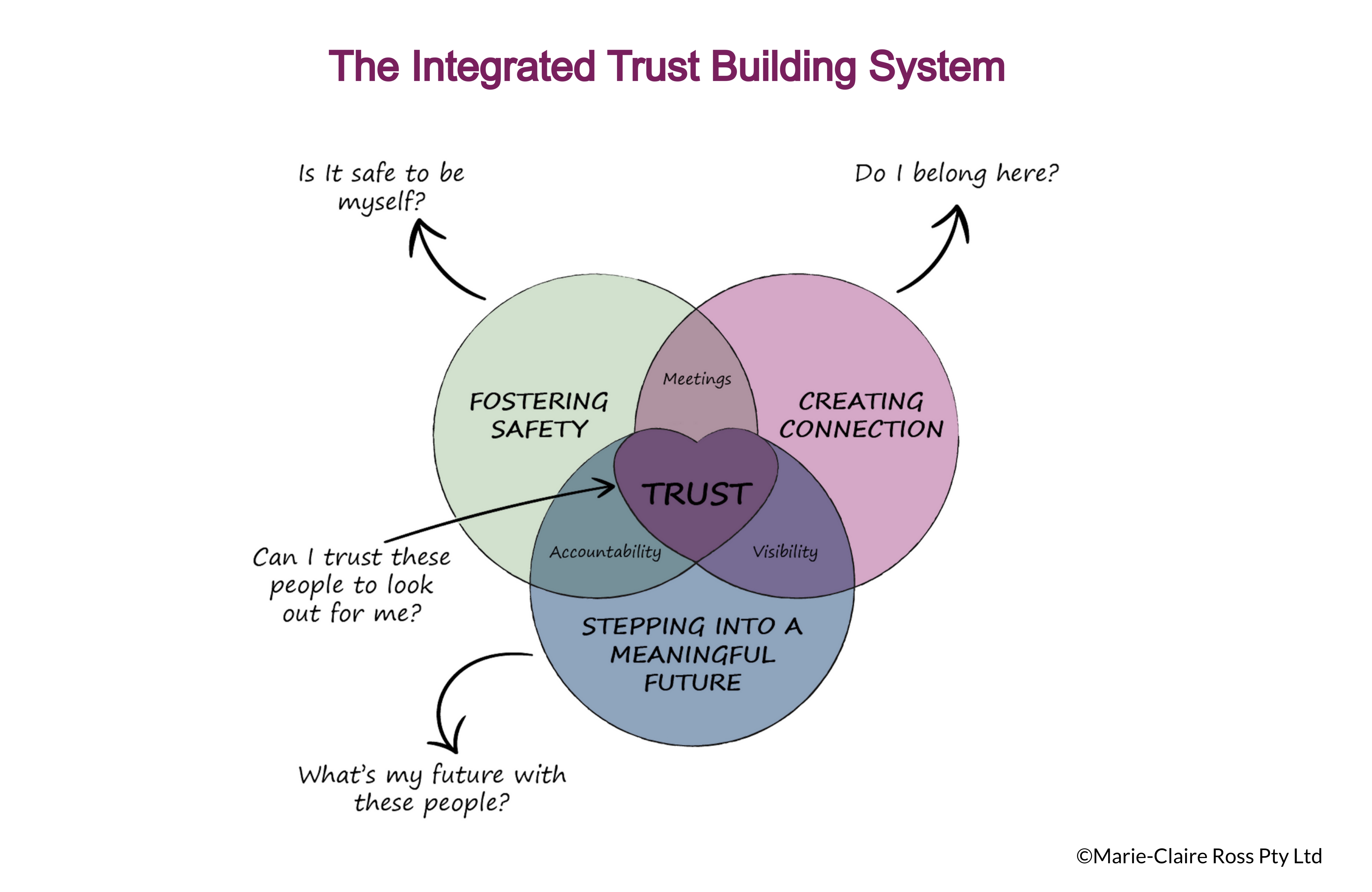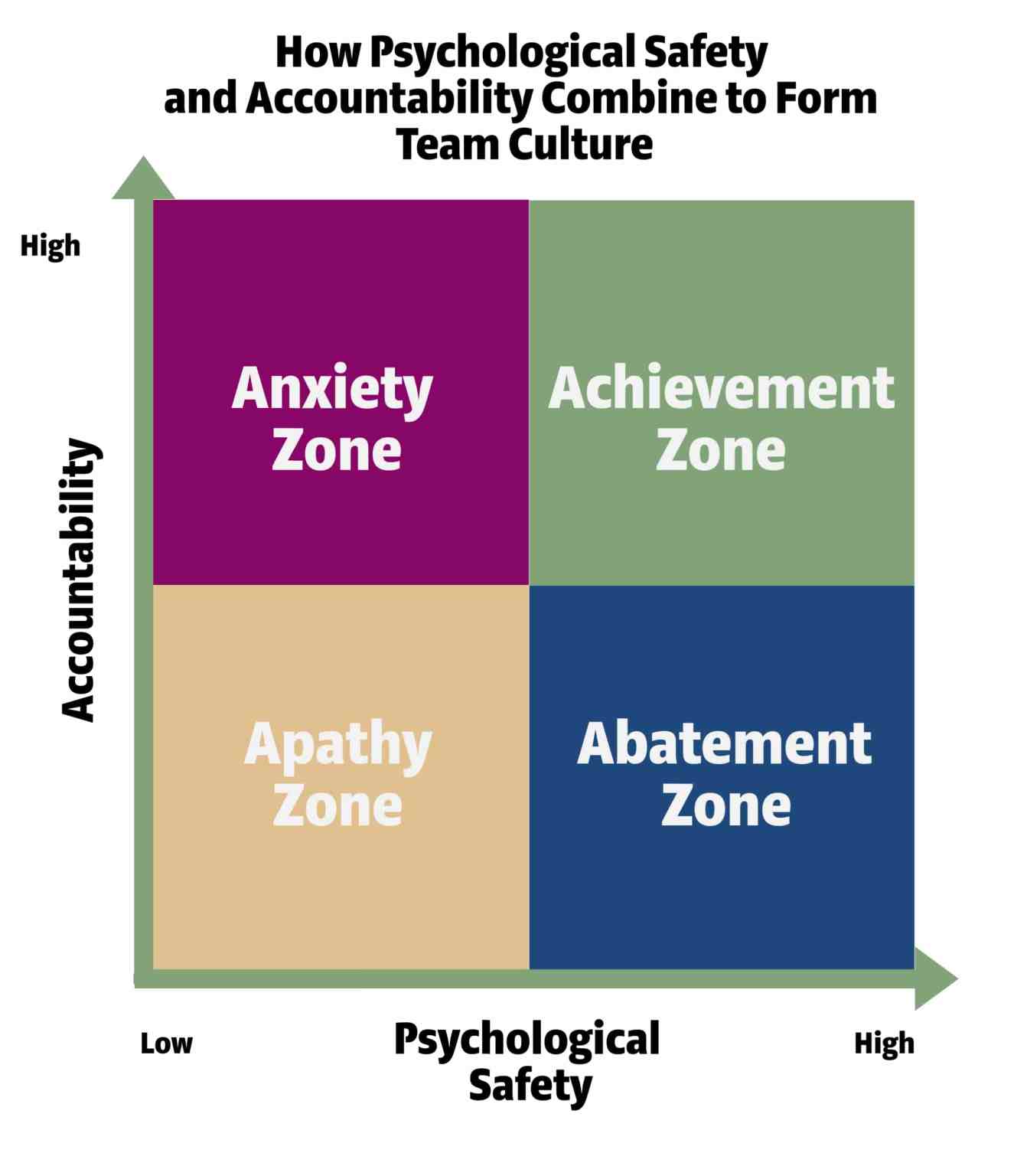
Meaningful work is something we all crave. When we understand the meaning in the work we do, it increases our engagement and intrinsic motivation.
The Energy Project, a...
According to research, companies with a high-trust environment have employees who are 50% more productive, 106% more energetic, and 76% more engaged compared to those in lower trust environments.
As we step into 2025, trust isn’t a soft skill; it’s a business imperative. Leaders who master how to consistently build trust in their team, and across teams, are key to ensuring sustainable success.
To understand what a high-trust environment looks like we need to define organizational trust.
According to the book, Trusted to Thrive, trust at work can be defined as "the ability to rely on (and predict) that others will do the right thing and make good on their promises."
After all, in a workplace, reliability is key for teams to work seamlessly together when there are different priorities, challenges and goals.
A team that trusts one another, and their leader, creates magical team coherence. That wonderful space where you are all in flow, moving as one, reading each other’s intent and body language. Like a group of professional dancers effortlessly moving in harmony, in tune to the rhythm of a song.
Trust creates a positive buzz, a hum, an energy that we crave. And it’s a place where we thrive as human beings, where we feel energised and empowered, connected and aligned through shared identity and purpose. We feel valued, creative and safe to share our opinion. It’s a place where we feel that all is possible, that we’re in this together and that the hard work is worth it. Feeling trusted makes us proud of our achievements and motivates us to keep going when things get tough.
A culture of trust is one where people feel both psychologically and physically safe, connected to others and the meaning of their work and a belief that everyone is working towards a better future.

Trust gives us a sense of safety to explore and understand our world. It helps us reach the flow state and work at our highest level. Without it, individuals and social groups can’t function properly.
Here’s how high-trust cultures give businesses a competitive edge:
Over the years, I've worked with many low-trust organisations that were painfully slow in their decision making processes. Leaders worked around each other, asked for more information or simply blocked decisions. It created unnecessary bottlenecks, increased uncertainty and an huge uptick in employee frustration.
In a high-trust environment, leaders make decisions quickly and consider employee opinions in their decision making process.
Research indicated that when leaders are open to questions, responded to team members, and made decisions promptly, employees felt more confident that leaders would be available when needed. Moreover, this responsiveness conveyed respect and empathy, motivating workers to put in effort and excel.
Not only that, leaders delegate confidently, and teams make decisions without constant oversight. This agility allows organisations to respond quickly to market changes and capitalise on opportunities.
As one of my students in my Tribe of Trusted Leader's program noted, “I’ve seen a significant uplift in my team’s activity since I began delegating more effectively. They now own their actions and take accountability for results, good or bad.”
Without trust, there is no meaningful connection between people. It’s just meaningless coordination.
According to a study in Harvard Business Review, 9% of managers feel that they can rely on cross-functional colleagues all of the time. While 50% say they can rely on them most of the time. More importantly, managers say they are three times more likely to miss performance commitments because of insufficient support from other units than because of their own teams’ failure to deliver.
These are costly issues. According to a study by Tania Menon and Leigh Thompson in Harvard Business Review, silos causing teams to miss valuable insights from people in other areas, costs on average $US7,700 a day.
Even in a healthy culture, employees may want to co-operate, but they can’t seem to despite themselves. Their team’s goals and priorities always get in the way. It means they often break their promises; missing deadlines, going over budget, failing to adhere to specifications or customer expectations.
Trust fosters open communication enabling collaborative teams and stronger relationships that break down silos between departments. Employees feel safe to share ideas, leading to more creative problem-solving and stronger cross-functional collaboration.
Trust is a critical driver of employee engagement and satisfaction.
ADPRI conducted a survey of 50,000 global participants to measure the differences of levels of trust within organisations. They found that those who trusted their teammates, team leader, and senior leaders were significantly more engaged and resilient. Participants who strongly agreed they trusted people in two to three of these categories were three times more likely to be highly engaged and resilient. Those who trusted all three categories were 15 times more likely to be fully engaged and 42 times more likely to be highly resilient.
Of course, the higher the employee engagement, the higher employee retention and the better the employee experience. This substantially reduces costs from employee turnover and bad behaviors.
According to a Deloitte study, trusting employees are 260% more motivated to work, have 41% lower rates of absenteeism, and are 50% less likely to look for another job.
A study in the Journal of Occupational and Organizational Psychology revealed that when leaders prioritise the needs of their followers and cultivate trust, employees exhibit increased positivity towards their work and feel more empowered, leading to enhanced creativity, innovation, and productivity.
Psychological safety, a core component of trust, encourages employees to take risks and innovate. Teams in high-trust cultures aren’t afraid of failure—they learn and grow from it.
When employees trust management and the organisation, they are more likely to exchange ideas and information, discuss difficult issues and find ways to create synergy.
But if people don’t trust, they close down. It means they won’t contribute in meetings, collaborate or try anything new for fear of retribution. They react negatively to one another, working in stealth to get things done in order to access resources and budget. They create chaos, rework, recriminations and workarounds.
In a PwC 2023 study, 79% of executives thought their employees trusted their company, but only 65% of employees said the same. This trust gap means that employees are less likely to buy-in to initiatives, trust the company to do the right thing, while leaders are less likely to take into consideration the fears and challenges of their workforce moving forward.
New initiatives won't work when there is a fundamental lack of trust that underlies it. In fact, the wider the trust gap between leaders and employees, the greater the chance that trust will be damaged, making it more challenging and expensive to restore.
Research from Slack shows that feeling trusted in the workplace has the greatest impact on employee productivity. Desk workers who feel trusted show exceptionally higher performance and report a better work experience than those who don’t feel trusted by their employers. Trusted employees report:
Organisations with high-trust cultures consistently outperform their competitors. According to Imperative, high-trust companies have 2.5 times the revenue generation of low trust cultures. And the running costs are substantially lower as employee engagement and talent retention are higher.
Establishing a high-trust culture doesn't occur by accident—it demands deliberate effort from leaders at all levels. It requires high trust leadership.
Investing in leadership development that focuses on building trust is crucial, as it equips leaders with the frameworks and tools necessary to cultivate trust within and among their teams. Participants in leadership programs like the Tribe of Trusted Leaders have seen firsthand the transformative impact of fostering high-trust cultures.
One participant shared: "It takes commitment to build trust with team members. It was invaluable to learn. Being more trusting of my team members and not micromanaging was big for me. And developing greater emotional intelligence and empathy. Those that know me know that trusting my employees more has been great achievement for me in this program."
As the workplace continues to evolve, organizational trust is more critical than ever. Distributed teams, difficult economic conditions, shifting employee expectations, and the pace of innovation demand leaders who can create environments where trust flourishes.
By fostering high-trust cultures, leaders can navigate uncertainty with confidence, inspire their teams to achieve extraordinary results, and position their organizations as leaders in their industries.
Are you ready to build a team culture that unlock your team’s potential?
If you want to learn the tools and strategies to build a high-trust team, schedule a 30-minute consultation today and discover how the Tribe of Trusted Leaders Program can help you achieve your leadership goals.

Meaningful work is something we all crave. When we understand the meaning in the work we do, it increases our engagement and intrinsic motivation.
The Energy Project, a...

According to research by Dr Amy Edmondson, a Harvard Professor, a combination of psychological safety and high standards is vital for teams to reach their full potential.